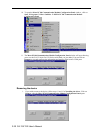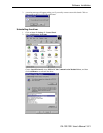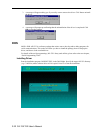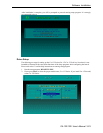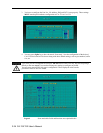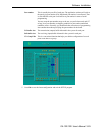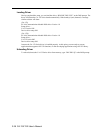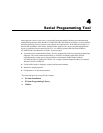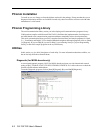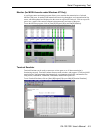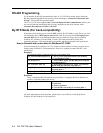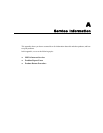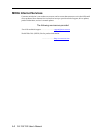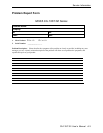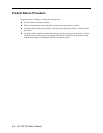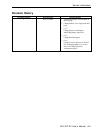
CA-132/132I User’s Manual
4-4
RS-485 Programming
If you intend to do RS-485 communication with CA-132/132I Series boards, please follow the
RS-485 programming guide below and also refer to the chapter, “Connection Cable and Cable
Wiring”, for more RS-485 operation details.
The CA-132/132I Series supports only 2-wire half-duplex RS-485 communication. Data+/- pins
are used for both data transmitting and receiving, depending on the mode selected: either
Automatic Data Direction Control or By RTS.
By RTS Mode (For back-compatibility)
If the mode switch for the port is set to the OFF position, By RTS Mode is used. The port is ready
for transmitting data if RTS signal is asserted and ready for receiving data if RTS signal is not
asserted. RTS scheme is the traditional method, and is suitable for most systems, including
Windows NT, Windows 95/98 and DOS, or even UNIX, that permits RTS control from
application programs. This mode should be compatible with most existing RS-485 applications.
How to transmit and receive data for Windows NT, 95/98
We recommend you to configure CA-132/132I Series ports as follows in order to acquire precise
timing control in RS-485 2-wire transmission. There are 2 solutions to control RS-485 2-wire
transmission.
Solution 1
The following model is common in RS-485 2-wire transmission.
sio_SetWriteTimeouts(port, 0) /* Set sio_write() into block mode if for Windows
NT and Windows 95/98 */
sio_RTS(port, 1) /* Turn on RTS signal. The RS-485 port is ready for
transmitting data. */
sio_write(port, buff, 10) /* Write 10 byte characters in "buff". The function
blocks until last character transmitted */
sio_RTS(port, 0) /* Turn off RTS signal. The RS-485 port is ready for
receiving data. */
sio_read(port, buff, 10) /* Read 10 bytes */
Solution 2
There is a dedicated RS-485 function in PComm library. It integrates the above functions of
solution 1 regarding sending data as one.
sio_putb_x(port, buff, tick ); /* 1. Turn on RTS and ready for transmitting data.
2. Send data.
3. Wait for tick time.
4. Turn off RTS and ready for receiving data. */
For more information on these functions, please refer to PComm library on-line Help file for
Windows NT and Windows 95/98 respectively.



